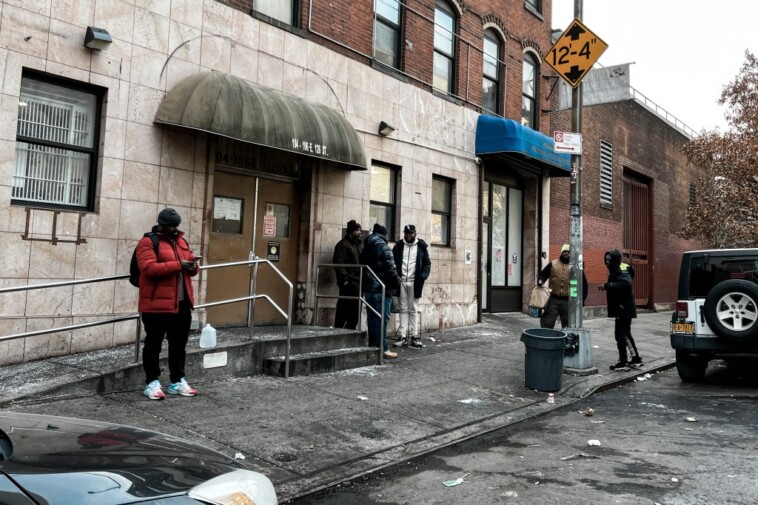There is a glimmer — the slightest bright spot — of good news about drug overdoses in New York.
The city’s Health Department reports that overdose deaths in 2023 declined compared to the previous year —but they fell just one percent, from 3,070 to 3,046.
A close look at that number reveals not only is it tiny, but that an important indicator has not declined.
As the city puts it: “overdose deaths remained disproportionately high among Black and Latino New Yorkers.”
Yet residents of low-income neighborhoods of color are exactly those in which overdose deaths are supposed to be reduced by so-called “harm reduction” centers — facilities in which addicts can inject drugs they bring with them under medical supervision.
The two “overdose prevention centers” run by OnPoint NYC — not legal under federal law but permitted to operate in the city — are both located in Black and Hispanic neighborhoods: one on East 125th Street in Harlem, another on West 180th Street in Washington Heights, not far from The Bronx, which suffers from the city’s highest rate of overdose deaths.
As the city turns a legal blind eye toward harm reduction sites, it’s important to ask whether they might be encouraging hard drug use — and indirectly to the persistently high overdose death rates in the neighborhoods these facilities serve.
A study supported by the National Institute on Drug Abuse, conducted by the NYU Langone Medical Center in conjunction with Brown University, has been funded to “measure the impact of some of the first publicly recognized overdose prevention centers (OPCs) in the United States.”
But it will not report final results until 2027 — and that’s too long to wait to learn more about a program that is neither legal under federal drug laws nor certain to be beneficial.
To be sure, OnPoint NYC expresses no self-doubt about the efficacy of its program. It’s convinced that its guidance for such activities as “safer sniffing, safer meth use” and “safer IV injection and safer crack/speedball injection” will reduce overdose deaths.
It counts as success that it has served more than 5,000 patients and, it claims, intervened to prevent 1,626 overdoses.
There’s an argument to be made, in other words, that, absent their efforts, New York would have suffered not a small drop but a sharp spike in OD deaths.
But the fact remains that overdose deaths remain persistently high in the very neighborhoods served by OnPoint suggests there are other ways to consider the impact of these efforts—which we must hope the NYU Langone-Brown study will measure.
The core idea that drug use can be safe sends a message — one of encouragement rather than prevention.
Are the OnPoint Centers treating established addicts or encouraging new ones?
Langone and Brown must look at who is being served over time — the same addicts or new ones?
In the short term, moreover—not in four years but as soon as possible — the city’s own health department can examine available information to answer this question: are those dying from overdoses the same addicts who are allegedly being saved by OnPoint?
The city need not wait for the Langone/Brown study— which will try to track 1,000 addicts over four years — to compare the death certificates of those dying from overdoses with the roster of those being seen at the safe injection sites.
Those facilities, keep in mind, are not open 24/7; addicts can overdose anywhere.
To date, the city has not only acquiesced in the OnPoint operations — it has been cheerleading them.
That’s the official message conveyed by the city’s Department of Health and Mental Hygiene Commissioner Dr. Ashwin Vasan who has said: “The facts are clear — overdose prevention centers save lives. Overdose prevention centers are an evidence-based approach to harm reduction we must authorize, invest in, and expand to combat our overdose epidemic.”
One can only puzzle over the assertion that the evidence is from — years before a major federally-funded study has delivered the data.
New York City, like municipalities around the country, is in line to receive millions in so-called “opioid settlement” funds, from the manufacturers of opioids that have been abused.
The city should use its $50 million to send a clear message: drugs, from pot to fentanyl, are not a safe choice but a bad one.
Howard Husock is an American Enterprise Institute senior fellow and the author of “The Poor Side of Town — And Why We Need It.”







